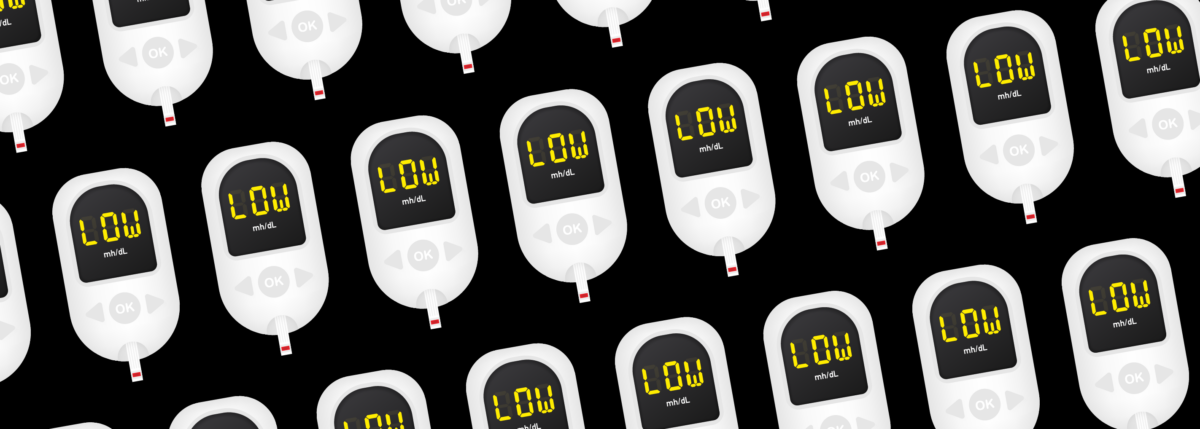Diabetes: Causes, Risks and Symptoms
Written by: T'ara Smith
4 minute read
December 21, 2018
Learning the Basics of Type 2 Diabetes
Type 2 diabetes (T2D) is a lifelong chronic illness that keeps your body from controlling its blood sugar because it can’t produce and use insulin consistently, also known as insulin resistance. Because your body can’t produce enough insulin to remove glucose from your bloodstream, it can cause a number of serious health consequences if left untreated. Sometimes, the symptoms of diabetes go unnoticed.
30.3 million people have diabetes, 23.1 million have been diagnosed and 7.2 million have been undiagnosed, and type 2 diabetes accounts for 90 to 95 percent of all diabetes cases. Type 2 diabetes is a silent disease—until it’s not. Symptoms of type 2 diabetes include:
- Extreme thirst (polydipsia)
- Frequent urination (polyuria)
- Constant, insatiable hunger
- Unexplained weight loss
- Fatigue
- Blurred Vision
- Darkened skin around the neck area
- Slow-healing cuts and bruises
- Tingling or numbing hands and feet
- Yeast Infection
If you experience any of these symptoms, go see a doctor immediately. Your doctor will take a blood or urine sample to test your blood sugar and A1C to determine a diagnosis.
What Causes Type 2 Diabetes?
Type 2 diabetes is a complex illness, so it’s hard to definitively say there’s a direct cause of it. Instead, a myriad of factors can contribute to a T2D diagnosis. Lifestyle factors such as a poor high-calorie diet of processed and junk foods, obesity, high blood pressure, physical inactivity and genetics are commonly linked to a diabetes diagnosis. However, it’s important to know type 2 diabetes is not limited to people who are obese or eat an unhealthy diet. It can affect people of all sizes and backgrounds.
The Risks of Having type 2 Diabetes
Having type 2 diabetes also greatly increases your risks for other health problems. Think of high blood sugar as a honey-like substance in your bloodstream, preventing blood from flowing properly to your organs, eyes, brain, feet and heart. If those parts of your body can’t receive the right amount of circulation to function, can you guess what happens?
That’s right—complications. Serious ones that can cause long term damage or be fatal.
T2D increases your risks of having a stroke, heart attack, blindness, neuropathy (nerve damage), heart disease, falling into a coma and hypertension.
What Can I Do Today to Decrease the Risks of type 2 Diabetes Complications?
You can get started on the path to controlled diabetes today! Here are some easy quick tips to help you:
- Test your blood sugar and consult your doctor about your target blood sugar levels. Set appointments to see any other health specialists you need to see such as an eye doctor, podiatrist, nutritionist and diabetes educator.
- Download an app to track which foods you’re eating and note how they affect your blood sugar levels. There are also apps that can help you track your blood sugar.
- Make a list of foods you love. Determine which ones you may need to consume less or more of.
- Make a healthy meal at home—preferably one of your favorites. The goal is to begin the habit of cooking at home, which can help you control how much fat, carbs and sodium you consume.
- Go to the grocery store. Buy an assortment of fruits, vegetables, whole-grains, meats and seafood. Don’t forget your favorite seasonings, herbs and other flavor boosters! Buy things you like instead of foods you think you should like.
- Get moving. You don’t need an expensive gym membership to workout. Going for a walk is free. If you’re new to exercise, start with five minutes a day, set a manageable goal, stick with it and build from there. Who knows? The following week, you may be walking 10 minutes per day.
- Understand your health insurance coverage. You can call your health insurance company and ask them which medications and supplies are covered and their out-of-pocket costs. If they’re too expensive, ask about the costs of generic versions. If the costs are still too high, contact local health clinics in your area and ask them about their diabetes-care services. If you don’t have health coverage, contact your state health exchange and ask if you’re eligible for financial assistance.
Type 2 diabetes is a serious disease. It’s silent and you can’t “feel” it until you experience some of the symptoms or a complication. With that said, living a full life with type 2 diabetes is possible if managed properly, and you don’t need to go on a restrictive diet to enjoy food or exercise several hours a day to manage your blood sugar. Also, this illness isn’t one-size-fits-all, so the way diabetes affects you won’t be the same way it affects another. Most importantly, there is no shame in having type 2 diabetes and it doesn’t imply you’re a failure at life. At Beyond Type 2, our motto is You Are Not Alone. There are millions who live well with it and are willing to support you, including this community. Our mission is to provide the resources and community to ensure you can live a healthy life on your terms and Beyond Type 2 diabetes.
[bt1-cta link=”https://community.beyondtype2stg.wpenginepowered.com/” text=”Join the Beyond Type 2 Community!” color=”blue” align=”left” ]

Author
T'ara Smith
T’ara was diagnosed with type 2 diabetes in July 2017 at the age of 25. Since her diagnosis, she focused her academic studies and career on diabetes awareness and living a full life with it. She’s excited to have joined the Beyond Type 1 team to continue her work. Two years later, T'ara discovered she'd been misdiagnosed with type 2 and actually has latent autoimmune diabetes in adults (LADA). Outside the office, T’ara enjoys going to the movies, visiting parks with her dog, listening to BTS and cooking awesome healthy meals. T’ara holds an MS in Nutrition Education from American University.
Related Resources

While there is still no exact cause of type 1 diabetes (T1D) or cure, new...
Read more

Living with a chronic condition like type 1 diabetes (T1D) can impact your mental health...
Read more

There is no doubt that having a parent diagnosed with type 2 diabetes may be...
Read more

